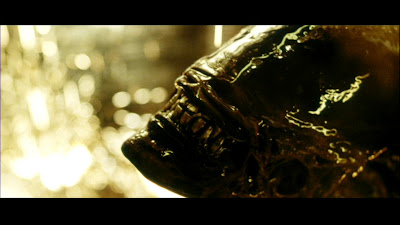In the scene, Natalie Portman is first experiencing the appearance of the swan-like skin; appearing first on her back and shoulders, creeping down her neck and up her arm. The image is a series of effects, combining feather quills and textured skin, along with dark make up that rapidly spreads across her skin. While this is happening, the camera is sweeping up and down Portman’s arm and torso, while also rotating around her body.
To execute the visual effects on this shot, the team had been working for weeks trying to make it work. The end result had to show the effect starting on her back, neck and shoulders, then continue the transformation process progressing further while tracking around her arms with the camera panning close up. It's a complex 360 degree shot showing the metamorphosis happening, with constant camera motion. And all of the effects had to be tracked to her arm. But the problem was; the team couldn’t lock it down - there was far too much camera movement, and to add to the problem, there were minimal tracking markers on her arms - nothing useful to track to. The team had exhausted their arsenal of tools, but they couldn’t make it work. The timing and movement in the shot were just too fast. And the client was getting nervous - the deadline was fast approaching. There was one option left, however. “Call Buddy!”












